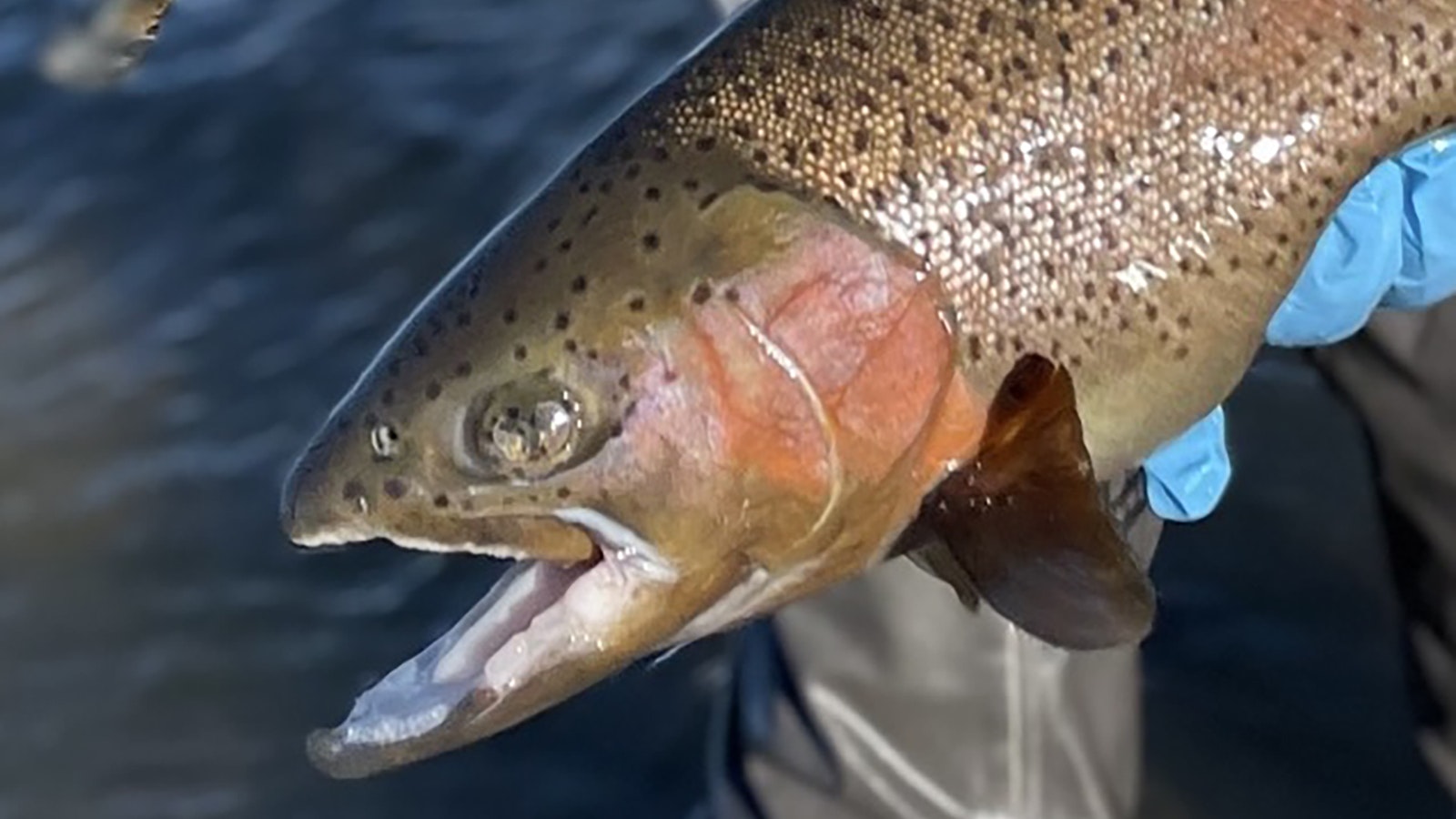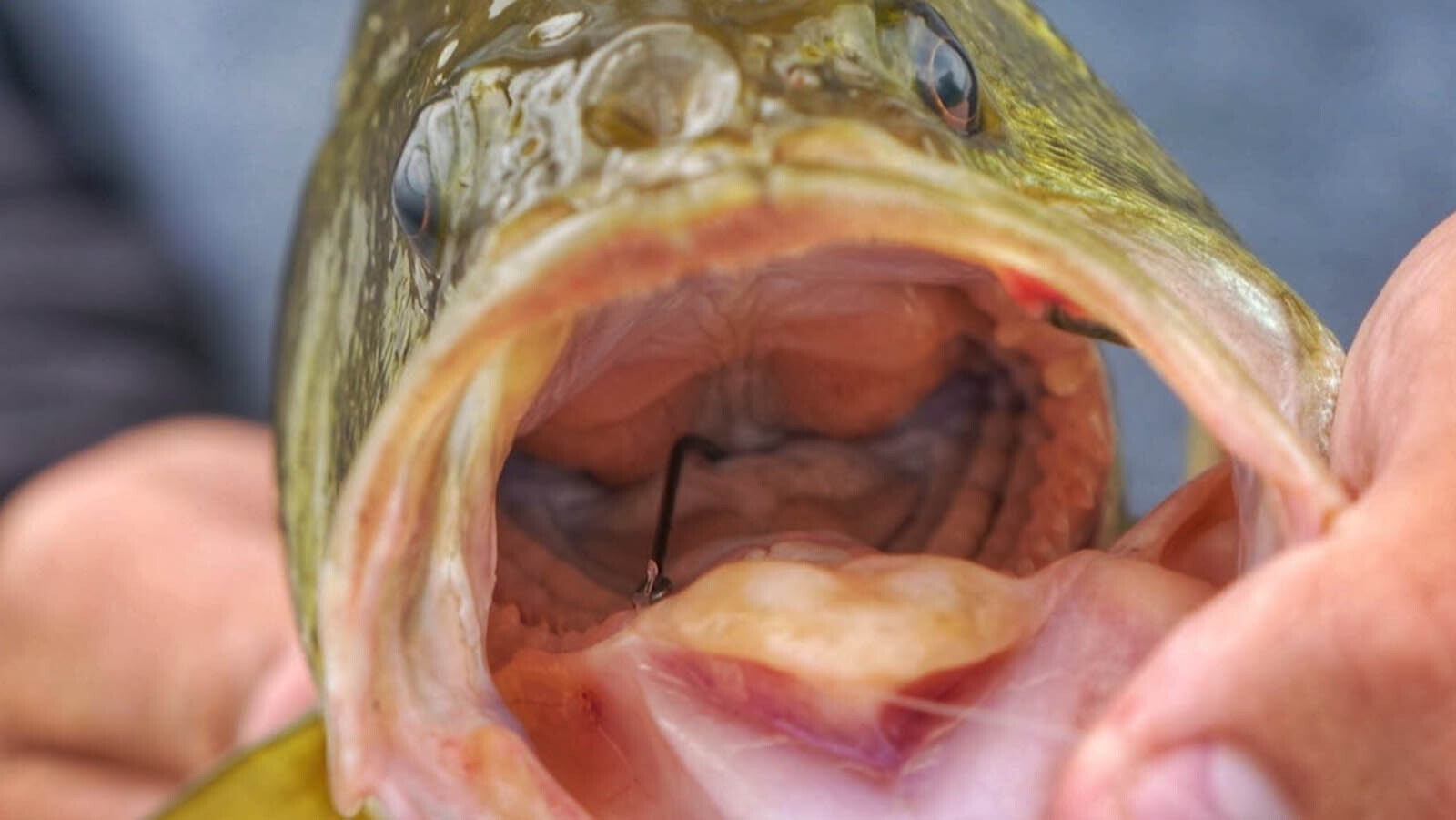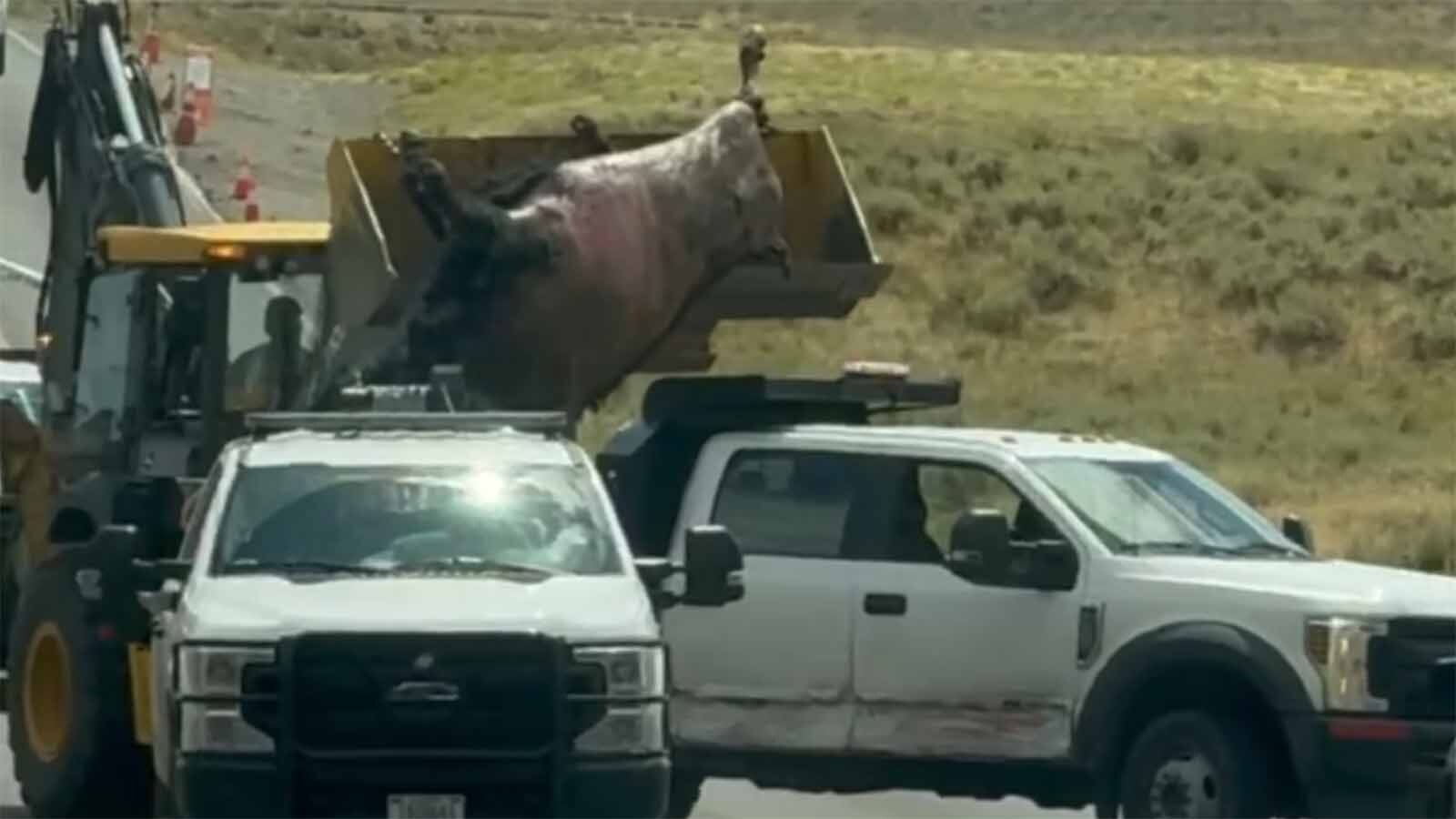Wyoming Game and Fish Department officials are concerned about fishhooks disfiguring the trout along Wyoming’s prized stretch of the North Platte River, where some trout are caught and released several times per year.
During a recent study, “We saw some pretty gnarly injuries in some of the fish,” biologist Matt Hahn told Cowboy State Daily.
“Luckily so far, the worst injuries we found in a minority of trout this fall,” added Hahn, who is the Game and Fish regional fisheries supervisor for the Casper region.
The matter could center on the longstanding debate among anglers over whether it’s best to use barbed or barbless hooks, fishing guide Trent Tatum told Cowboy State Daily.
He favors barbless hooks, but said that fish injuries frequently result from people being careless, regardless of the type of hook used.
“I don’t know why people have to be in a hurry” and possibility ripping out parts of the mouths of fish, said Tatum, who is co-owner of North Platte Lodge and The Reef Fly Shop Cottages and RV in Alcova.
He assisted Game and Fish biologists with the fish study along the North Platte this past fall. It involved stunning fish with electroshock so they could be retrieved and examined.
Injury Percentages
Injuries to fish are rated on a scale of 0-4, with zero meaning the fish appeared to be completely uninjured, and 4 indicating severe and even possibly life-threatening damage.
Along various points of the North Platte, preliminary results of the fall 2023 study indicate that injury rates varied by location.
On the famed Miracle Mile stretch, 21.4% of the trout “had noticeable injury,” Hahn said.
At Gray Reef it was 12.2%, on the stretch running though Casper it was 6.9%, and at Big Muddy 3.9%.
“Those figures represent the cumulative number of adult fish that ranked as either a 3 or 4 on the severity index scale of 0-4,” he said.
On the lower end of the scale, the percentages were much higher, Hahn said.
“The percent of the adult population showing any sign of being caught is much higher — non-zero on the scale — 72.6% at Miracle Mile, 64.6% at Gray Reef, 24.3% in Casper and 17.6% at Big Muddy,” he said.
The high end of severity includes things such as mangling of a fish’s mouth that could impede its ability to eat, injuries to gills, broken jaws or destroyed eyeballs.

Catch-And-Release
The sheer number of injuries or other signs of fish having been caught might reflect the popularity of the North Platte as a catch-and-release fishery, Hahn said.
Anglers may keep a few of the fish they catch on stretches of the river, but apparently most do not, he said.
“Every once in a while, if grandma wants trout for dinner, people will keep fish they catch on the North Platte,” but for the most part they don’t, Hahn said.
“It’s a little unique, where you have pretty much a purely catch-and-release fishery. A lot of these fish are caught and released several times a year,” he said.
Also, the rates of injury or signs of being previously caught were higher in rainbow trout than for brown trout. That could be because brown trout are more difficult to catch, Hahn said.
He’d like to delve further into how the North Platte compares to other fisheries, where catch-and-release might not be so common.
Hahn said initial inquiries with other Game and Fish regional offices indicate that perhaps the injury rates in other Wyoming fisheries are lower, but it will take more study to prove that.
He’d also like to compare data with fisheries in neighboring states, such as Montana and Idaho.
More Pressure In Certain Areas?
Tatum said that fish injury rates on the North Platte might have been driven by anglers having to concentrate on certain sections of the river this past summer and fall.
Runoff from the massive snowfall during the winter of 2022-2023 left the river and many of its tributaries churning. And heavy storms throughout the summer didn’t help.
“We had borderline biblical monsoon events” that left parts of the river too swollen and muddy to fish, Tatum said.
So, anglers tended to bunch up on stretches of the river that remained clear, or on nearby lakes and reservoirs.
Barbed, Or Barbless?
Tatum said he prefers to fish with barbless hooks and encourages his clients to do so, because it’s so much easier to pull a barbless hook out without ripping a fish’s flesh.
It can also be a matter of personal safety.
“It’s really handy if you accidentally hook yourself, or somebody else accidentally hooks you,” Tatum said. “It can be heck of a lot easier to back that barbless hook out.”
Avid angler and fishing guide Christopher Rice of Laramie said he prefers barbless hooks for himself.
“When I buy a fly, or when I’m tying my own flies, I use barbless,” he said.
However, most of his clients like to use barbed hooks.
“With a barbed hook, there’s less of a chance that the fish will escape while it’s thrashing around back and forth,” said Rice, who owns Gem City Custom Rod and Flies.
What Does The Public Think?
Hahn said he isn’t taking a stand one way or the other in the barbed-barbless hook debate.
Instead, Game and Fish would like to hear from the public about that, and any other matters of concern on the North Platte.
Reports from the fall fish study should be finalized by spring, so he’d like to host a public meeting and hear what anglers have to say.
“We are going to try to do a public meeting at some point this spring,” he said. “We haven’t set a date yet, but maybe sometime in March, because that’s when a lot of people are thinking about going fishing again.”

Mark Heinz can be reached at mark@cowboystatedaily.com.





